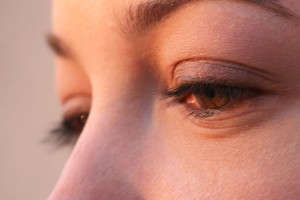 As we get older, dead skin cells can suck the luster from our faces by clogging our pores and accentuating fine lines. That’s why exfoliation is the key to a smooth, clear complexion and youthful glow.
As we get older, dead skin cells can suck the luster from our faces by clogging our pores and accentuating fine lines. That’s why exfoliation is the key to a smooth, clear complexion and youthful glow.
Retinol to the rescue! These skin-sloughing superstars can significantly boost our skin’s tone and texture. But with so many products on the market, how do we choose?
What is retinol?
First, a quick retinol primer: Retinol is simply another name for the vitamin A molecule. To be effective, Retinol must first to be converted into retinoic acid. Only retinoic acid directly affects skin cells and helps reduce signs of aging. However, retinol conversion varies greatly by product and individual. More on this later.
How does retinol work?
Retinol is an extremely effective cell-communicating ingredient, meaning it can send messages to almost any skin cell instructing it to behave like a much healthier, younger version of itself. One of the many ways retinol helps us look more youthful is by improving pore function. Pore size is a product of genetics, but retinol can help reduce the size of pores that have become enlarged from clogging or sun damage. The cells that make up the pore lining can become sluggish and build up as a result of aging and sun damage, causing the pore wall to stretch. Retinol sends a message ordering these “lazy” cells to get back to work so our pores return to their normal size.
Retinol vs. retinoid: which is better?
Both retinol and retinoids (such as Retin-A), help speed up cell turnover by encouraging dead and dying skin cells to exfoliate more quickly, while promoting new growth of healthy cells. The primary difference between retinols and retinoids is how they are formulated. Retinol is a natural derivative of vitamin A and can be found in countless products on department and drugstore shelves. However, when exposed to air during storage or use, retinol can quickly degrade before it can be converted to retinoic acid in the skin. Retinol tends to be gentler on sensitive skin than retinoids, but this may largely be due to lower overall efficacy. Some companies have developed stabilized, high-concentration retinol formulas as a result. Look for vitamin A listed as retinol, retinyl acetate, retinyl palmitate, or retinyl aldehyde (also called retinal or retinaldehyde).
Retin-A, best known by its generic name tretinoin, is a synthetic form of vitamin A and is only available by prescription or through a doctor’s office. Since it has already been converted into retinoic acid, it tends to work more quickly and be more effective than non-prescription retinoid products. Other prescription retinoids include Renova, Differin and Tazorac.
Retinol vs. Retin-A: Side Effects
Both Retinol and Retin-A can cause stinging, redness, peeling, burning, itching and flaking. Applying the retinol product of your choice every other day and mixing it with your moisturizer before applying can help your skin gradually acclimate. With both ingredients, you may see a temporary increase in acne breakouts as your skin purges old skin cells and begins to unclog pores. These symptoms should resolve in a few weeks. They can also make skin more sensitive to the sun so be sure to apply sunscreen or foundation with sunscreen daily and avoid sun exposure as much as possible. Vitamin A products should never be used by breastfeeding or pregnant women.
Bottom line
Prescription retinoids appear to provide a better shot at eliminating fine lines and reducing wrinkles than even the best retinol formulations. Either way you go, research shows that using your product of choice in conjunction with a quality AHA exfoliant once a week can help seriously boost effectiveness in treating sun-damaged and wrinkled skin.
